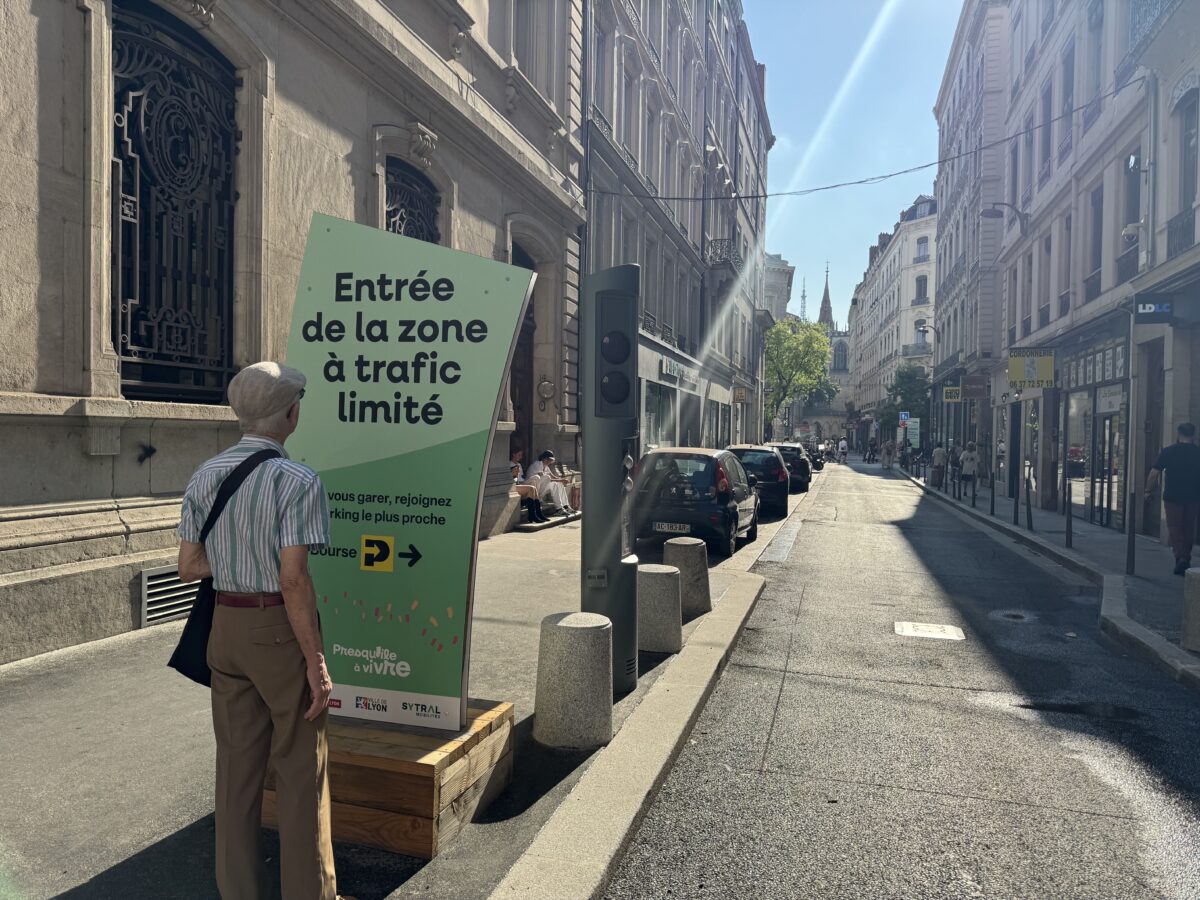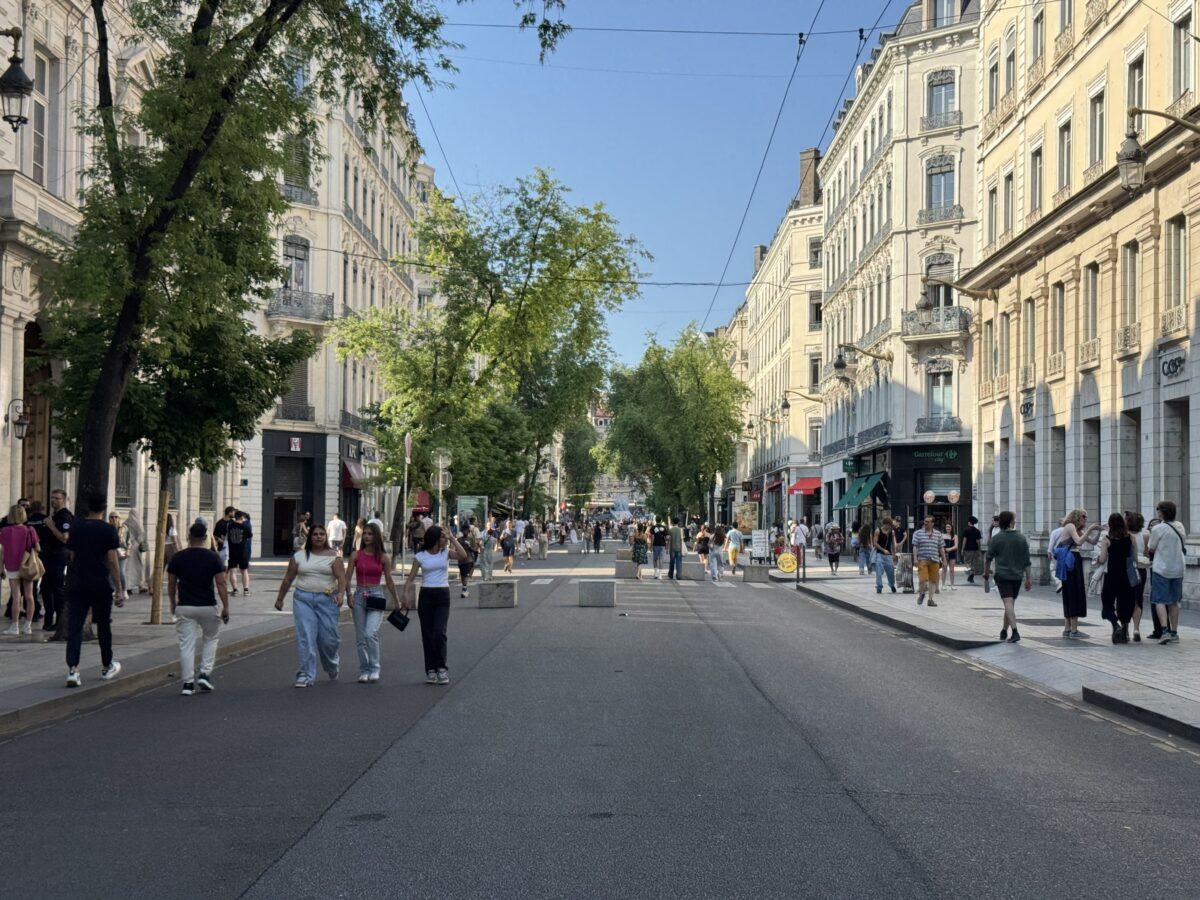The limited traffic zone in Lyon, between waiting and questioning

The limited traffic zone (ZTL) came into effect this Saturday, June 21, 2025. While Green elected officials welcome this major development, traders are concerned about a drop in footfall on the Presqu'île in the coming weeks.
Since Saturday, June 21, 2025, Lyon's city center has been a limited traffic zone (ZTL). A major project that Green elected officials are welcoming, but which has raised questions among shopkeepers. A project that required five years of consultation and work before being completed . And which aims to provide space for pedestrians, "safe, rebalanced paths, and a neighborhood designed as a real meeting place," according to Grégory Doucet, the city's mayor.
More space for pedestrians (increasing the pedestrian path from 5 to 9 kilometers), and limited access for cars. This doesn't mean completely banning them from this attractive part of the city. "We still want the city center to be dynamic, pleasant, and prosperous," the mayor guarantees. Residents, public transportation, taxis, delivery drivers, and emergency services will still have access.
These rights holders will have to pass through access points, installed all around the area, and will be able to enter using a code, a badge or thanks to license plate recognition . "We already have more than 10,000 access points allocated to rights holders," says Bruno Bernard, the president of the Metropolis.

On Avenue de la République, the feedback from shopkeepers is mixed. Many fear the desertification of the city center. "We used to receive many customers who came by car from outside Lyon. For some time now, we've had the impression that the city center has been abandoned by its Lyonnais," worries the manager of a candle shop on the avenue. "For now, the drop in footfall is around 10 to 20%. But in the long term, I'm afraid it'll get worse."

A little further on, a restaurant manager is desperately hoping for a more positive future. "During the work, it was even worse," the manager remarks, his eyes fixed on the empty seats on his terrace. "We had to ask the jackhammers to take a break during lunch service. Between the noise and the dust, no one wanted to sit down at our place." Ludovic Benouaden, director of the Italian restaurant Volfoni, located on Rue du Président Edouard Herriot, qualifies the prevailing skepticism. Work has just begun in front of his establishment, depriving him of his terrace until next September. " It's a blessing in disguise. The work is affecting customers, but once it's finished, customers will return," the manager expects confidently. "I'm not worried about what's next; on the contrary, I'm looking forward to it."
Faced with the discontent of shopkeepers, the president of the Metropolis specifies that the attendance at the three main TCL stations on the Presqu'île (Bellecour, Cordeliers and Hotel de Ville) will increase by 30% from 2019 to 2024. " Passers-by exist, the Lyonnais continue to go to the Presqu'île," assures Bruno Bernard, aware that attendance does not necessarily lead to consumption.
Lyon is far from being the first European city to pedestrianize its city center. Before it, Barcelona, Salzburg, Milan, and even Paris, starting November 4, 2024 , have all followed. "It takes time to adapt, I understand," the mayor assures. "It's a revolution for the city, but we're doing everything we can to ensure it goes smoothly."
Lyon Capitale



%3Aquality(70)%3Afocal(2023x564%3A2033x574)%2Fcloudfront-eu-central-1.images.arcpublishing.com%2Fliberation%2F6LYDCRYCHFBVFEFBTELAAYOOBY.jpg&w=3840&q=100)
%3Aquality(70)%3Afocal(2677x687%3A2687x697)%2Fcloudfront-eu-central-1.images.arcpublishing.com%2Fliberation%2FS4JKEAUBMBFW3NLKXSAR3ZHT6M.jpg&w=3840&q=100)
